After a devastating earthquake, Marrakech plans to build back with resilience
Reflecting on how, with UrbanShift's support, the city of Marrakech is making strides to enhance its urban nature and lower emissions.
The UrbanShift project will conclude in October 2025. In the program’s final year, we will be looking back to assess the impact on people, climate and nature of our support to the UrbanShift countries and cities around the world. This is the first piece in this series, highlighting the efforts from the UrbanShift project in Marrakech, Morocco, to create a more resilient and sustainable city for all.
In September 2023, a 6.8 magnitude earthquake struck Morocco, killing over 3,000 people and devastating communities and infrastructure across the greater Marrakech region. Marrakech, in particular, was hit hard. For weeks, rubble-filled the narrow alleyways of the 12th-century medina, and countless homes and structures collapsed.
Rebuilding is the priority, said Amal Nadim, Head of Environment and Climate Change Unit at UNDP Morocco, which has overseen the city’s collaboration with UrbanShift. “But this reconstruction is taking place within the framework of a thoughtful and responsible approach,” she said. “The vision guiding this reconstruction is based on the idea of ‘Build Back Better,’ while taking care to respect the principles of sustainability and resilience.”
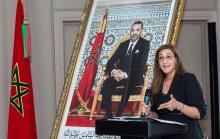
In the wake of the earthquake, Nadim said, Marrakech is taking a holistic approach to resilience. Beyond rebuilding the city’s physical infrastructure, Marrakech aims to strengthen its social, economic, and environmental resilience. Not long after the earthquake, the city formally introduced the Global Environment Facility-funded and UrbanShift-supported Marrakech Ville Durable (Marrakech Sustainable City) project, a wide-ranging initiative to accelerate an integrated and resilient approach to planning. Covering topics such as biodiversity and urban nature to sustainable mobility and waste management, the project aims to support Marrakech to chart a more resilient future.
Specific elements of this vision for the future are already coming into focus. Over the past two years, UrbanShift has worked with the city on several planning and visioning activities to shape the city’s approach to resilience.
One key idea is pursuing a low-emission zone in Marrakech’s historic medina. In recent years, low-emission zones have spread across major metropolitan centers, from London to Guadalajara, improve safety, mobility, and air quality in historic urban cores. As tourism and activity returned to Marrakech following the earthquake, air quality and congestion issues intensified, prompting a reckoning in the city. In November 2024, UrbanShift facilitated a Peer-to-Peer Exchange that brought representatives from Marrakech and Johannesburg to Madrid to learn from the city’s efforts to plan and roll out the EU’s largest low-emission zone.

“It was a very rich experience in terms of knowledge-sharing, and it helped us to better understand this new concept from both the planning and the legal perspectives,” said Karam Amzil, the Specialist National Project Coordinator for Marrakech Ville Durable at UNDP Morocco. “We were able to see how [the Madrid low-emission zone] can have a strong economic, social, and environmental impact, so the local leaders [from Morocco] who attended the exchange were really drawn to the idea of applying this concept in the context of the medina—the beating heart of the city.” Following the exchange, planners in Marrakech set to work on preparing to study the area to determine possible design and policy approaches to lower emissions in the city’s medina.
Alongside evolving the streets of the media to address present and future environmental concerns, Marrakech is also investing in urban nature-based solutions to respond to intensifying heat. Last summer, temperature records were shattered across Morocco. With its renewed focus on planning for resilience, Marrakech participated in an UrbanShift Geospatial Data Analysis Lab in June 2024 to jumpstart an effort to expand the city’s green space and strengthen its biodiversity.
Urban green spaces can help cool temperatures, improve air quality and human wellbeing and offer opportunities for community connection and cohesion, while rich biodiversity enhances climate resilience and improves the well-being of natural ecosystems by attracting birds and pollinators. During the Lab, representatives from Marrakech and other Moroccan cities dug into the city’s data on green space and biodiversity and assessed the potential for expanding both. Following the Lab, Amzil said all the green spaces in Marrakech have been mapped, and the existing biodiversity has been inventoried. Now, the city is planning to expand urban nature into underserved and more built-up areas, like the medina, while also creating a stewardship strategy for its green spaces.
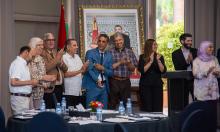
“We were so pleased with the work we were able achieve through the UrbanShift Lab last year,” Amzil said. "Everyone from the city participated wholeheartedly and contributed and created a great deal of added value.” In fact, he added, the Lab was so transformative for the city’s approach to urban greening that Marrakech has expressed interest in organizing another Lab with UrbanShift and other local partners “to enable this collective intelligence to continue to emerge and shape our approach to other challenges.” Up next on the city’s list of priorities: electric mobility and improving waste management. UrbanShift might be concluding this year, but the inspiration from the Peer-to-Peer Exchange and the potential of applying the Lab framework to future planning activities will continue through Marrakech's efforts to enhance resilience for years to come.
Amal Nadim is Head of Environment and Climate Change Unit at UNDP Morocco, the implementing agency for the GEF-funded “Marrakech Ville Durable” project.
Karam Amzil is the Specialist National Project Coordinator for the Marrakech Ville Durable project at UNDP Morocco. He is the UrbanShift focal point in Morocco.
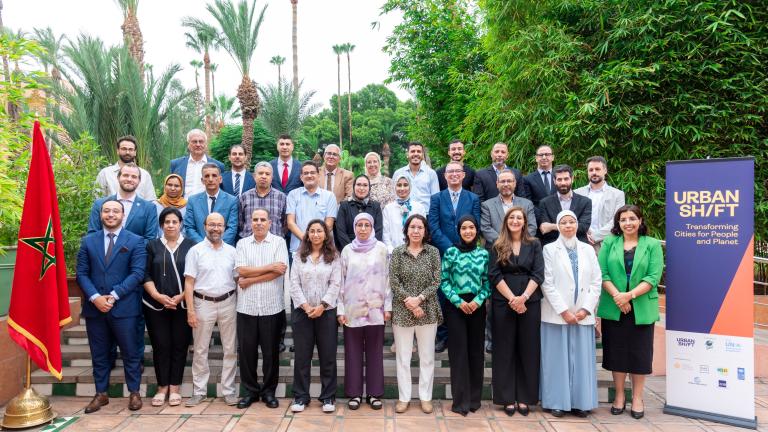
URBANSHIFT MARRAKECH LAB: USING GEOSPATIAL ANALYSIS AND INDICATORS TO PRIORITIZE GREENSPACE EXPANSION AND ENHANCE URBAN BIODIVERSITY
This workshop convened representatives from the cities of Marrakech, Agadir, Beni Mellal, Rabat and Tangier, the national government and other stakeholders to prioritize greenspace expansion and biodiversity conservation in Marrakech.
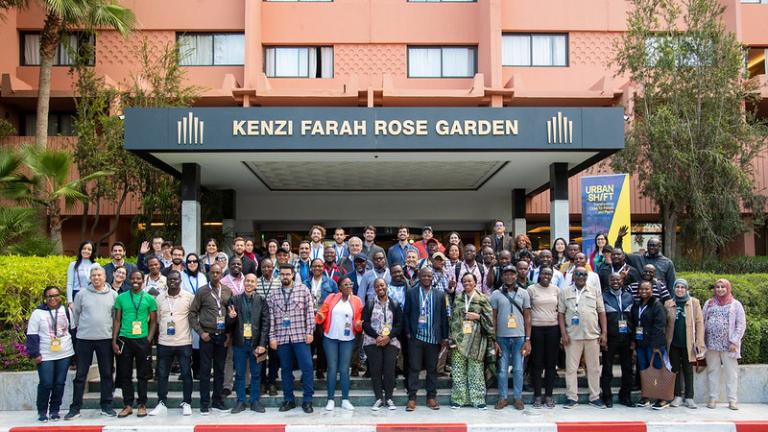
Navigating Urban Biodiversity and Finance: Insights from UrbanShift's Marrakech City Academy
With Marrakech as the backdrop, participants in this UrbanShift City Academy for Africa engaged with innovative strategies for financing biodiversity and urban challenges like water management.
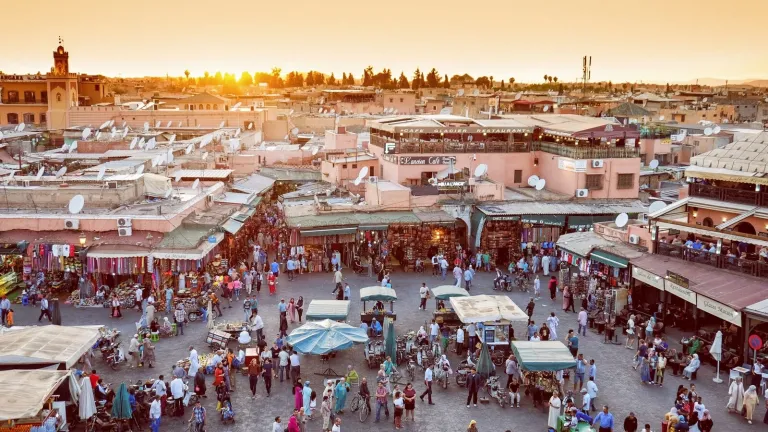
Marrakech City Academy
In February 2024, this City Academy will focus on Urban Biodiversity and Accessing Urban Climate Finance.
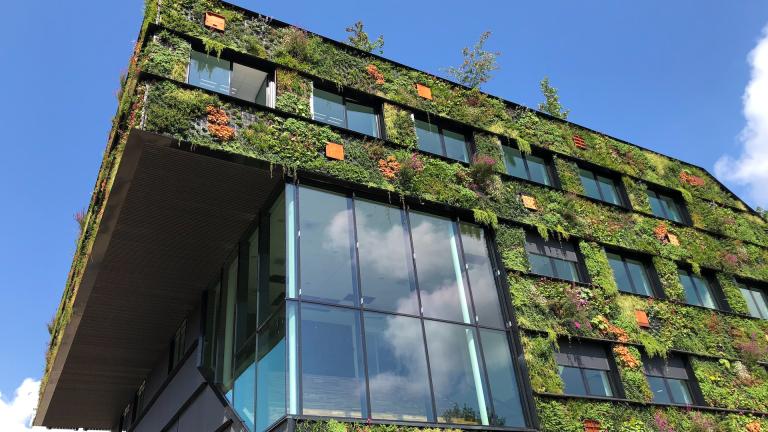
Enhancing Urban Infrastructure Resilience through Nature-Based Solutions in South Asian Cities
This webinar explores how nature can transform South Asian cities into resilient, sustainable, and thriving urban spaces.

